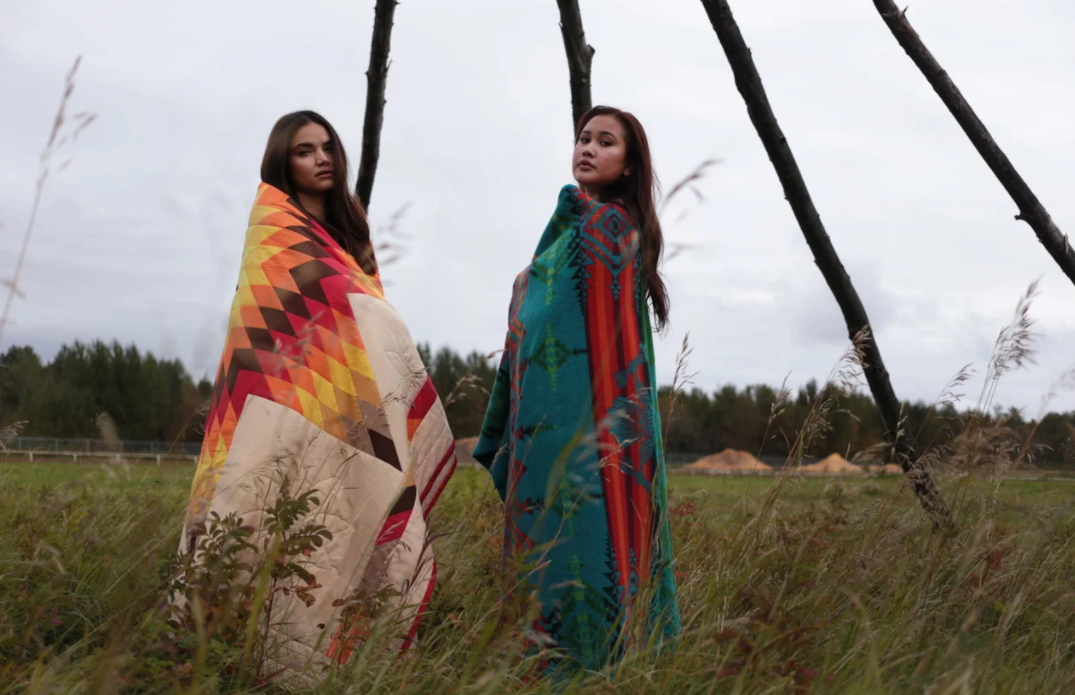
October 12, 2020
Growing up on Nipissing First Nation, my traditional territory, I remember that my aunties would always be cooking or making something. On my mom’s side, I come from a large family of 18 aunts and uncles—we’re one big, loud, crazy Ojibwe family—and we would often all gather at my grandmother Leda’s house. There, my aunties would often be sewing or making quilts, dreamcatchers, moccasins or mittens for the winter, or even regalia for those of my cousins who dance in powwows.
I was brought up around the idea of maintaining traditional craftwork. Indigenous design isn’t relegated to historical artifacts; traditional techniques such as beadwork, quillwork, and hide tanning are still being innovated upon and incorporated into the work of Indigenous artists today. It never dawned on me that people don’t know that Indigenous goods are, yes, still being made. I recently gifted a friend a dreamcatcher made by my aunt, and she couldn’t believe it was completely handmade. Lack of visibility has perpetuated this idea. Many Indigenous artists or designers live in remote areas and for a long time have not had the resources, or technology, to sell their work on a global scale. This is true even for my own family. While my aunties always had no problem selling their items among family members—someone’s always looking for something—they primarily sold their work on the powwow circuit, or through good ol’ word of mouth.
But that’s all changing now: With the rise of e-commerce and social media, not to mention global fashion weeks like Indigenous Fashion Week Toronto, it’s easier than ever to find authentic, Indigenous-owned brands. The Indigenous fashion scene has grown and expanded rapidly. Now, one can now find everything from jewelry and textiles, to streetwear and swimwear—the through line being that Indigenous brands continue to carry on a sense of sustainability and eco-mindedness, while honoring their tribe’s unique customs. With one tap on Instagram, artists can now share their pieces and provide the rich stories or context behind them, so that their consumers are educated about the piece that they are purchasing. Non-Indigenous brands have long co-opted Indigenous design motifs and used sacred elements, such as headdresses, in harmful, culturally appropriative ways; by shopping Indigenous, you are guaranteed a more respectful exchange.
Seeing how today is Indigenous Peoples Day, there’s no better day than to get to know a few Indigenous brands. Jewelers such as Keri Ataumbi, for instance, are fusing luxurious stones or diamonds with traditional materials (Ataumbi uses materials such as porcupine hair). Beauty brands such as Cheekbone Beauty and Ah-Shí beauty are offering eye palettes, lip gloss, and more (10 percent of Cheekbone Beauty’s profits are donated to Shannen’s Dream and the Caring Society, both benefiting Indigenous youth). And clothing brands such as Liandra Swim or Ginew, an Indigenous denim line, are proving that traditional Indigenous design can still be contemporary.
Below, shop 16 striking pieces from Indigenous-owned brands.
Share This Article
